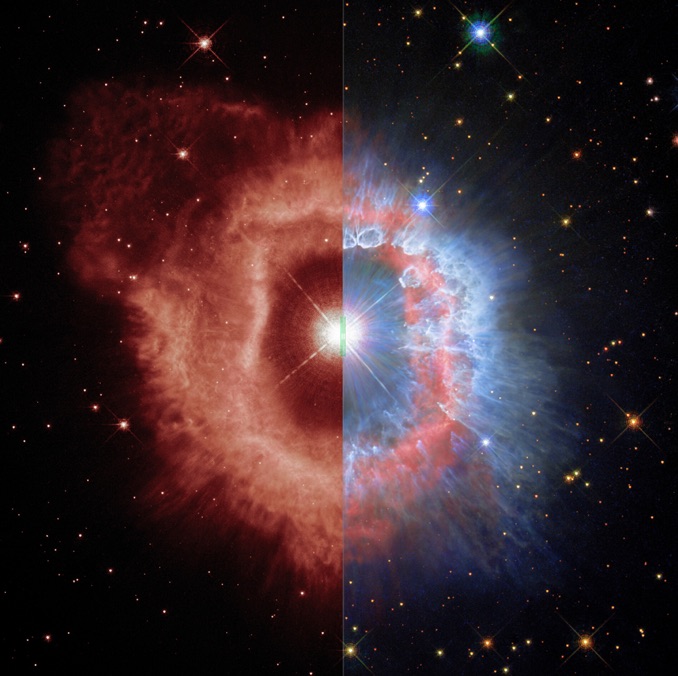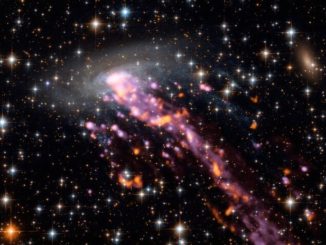
Reprising the Hubble Space Telescope’s 31st anniversary image, the project team has released two views of the luminous blue variable AG Carinae, a massive star embedded in a 5-light-year-wide shell of expanding gas and dust resulting from multiple eruptions over the past 10,000 years as the star burns through its nuclear fuel. In one view, ionised hydrogen and nitrogen emissions in the expanding shell of gas blown off earlier are shown in red while dust shining in reflected light is shown in blue. AG Carinae is continuously losing mass, causing it to contract, heat back up and explosively eject material into surrounding space. The gas (shown in red) making up the nebula surrounding the star is moving outward at some 43 miles per second. Dust in the shell (shown in blue) forms clumps, bubbles and filaments, shaped by the high-speed stellar wind. Full-frame views highlighting both aspects of AG Carinae are shown below:





